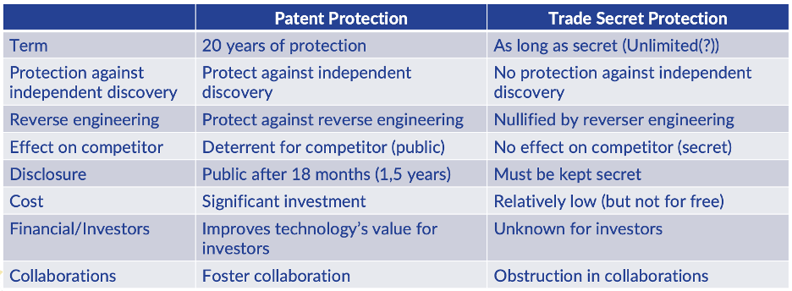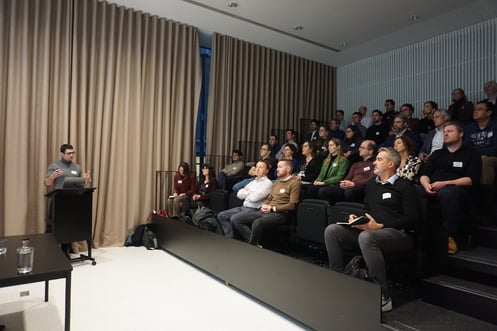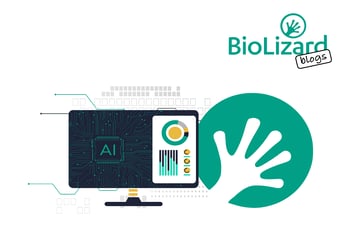AI in biotech: Fashioning the future of R&D and IP
In today's dynamic biotech and biomedicine sectors, the transformative power of artificial intelligence (AI) stands at the forefront in R&D. To leverage AI to its full potential, it’s key to understand the nuanced, strategic advancements it brings - especially when grappling with complex molecular & biological data. On the other hand, as the application of AI in biotechnology research and development holds tremendous opportunities for innovation and its importance is expected to increase significantly in the coming years, it is at the same time essential to consider how companies can protect these competitive advantages.
On 21st November 2023, the European IP experts of Gevers and the biomedical data analytics & AI experts of BioLizard joined forces at the Fashion Museum of Antwerp to dive into these topics, and discuss how AI is “fashioning” the future of biotech.
Unique challenges and opportunities for AI in biotech and biomedicine
Volodimir Olexiouk, Principal Scientist and AI & Analytics Team Lead at BioLizard, opened the event with an overview of the unique challenges and advantages of adopting AI within biotech and biomedicine. In particular, he highlighted that factors that have contributed to successful application of AI in other fields, such as the clearly defined data space in speech generation or chess, are often lacking in biomedicine. This means that there are still some unique hurdles to overcome for biomedical experts aiming to leverage AI.
Nonetheless, AI is already contributing to drug development pipelines, and its impact is expected to grow. In order to make use of AI beyond a tip of the hat to its buzzword status, here are three key tips from Volodimir Olexioiuk:
- In order to effectively leverage AI, your data must be AI-ready. In other words, your data structure, and overarching data governance strategy, must ensure that your data is findable and accessible for AI algorithms.
- AI is particularly powerful when it is used iteratively. For example, AI algorithms can be implemented to both provide new insights from your existing data, and also to inform you about what future data collection could further improve your biological understanding. For example, such an algorithm might inform you about under-sampled sub-populations within your dataset, so that you can collect additional data in a targeted and cost-effective manner.
- Think of AI as an opportunity for human-computer collaboration. Although we predict that AI will automate several steps within drug discovery pipelines that are still performed manually, there are still key points at which human input will be necessary - such as selection and interpretation of key results, and transforming those results into actionable hypotheses for further testing.
Patent protection versus trade secret protection
Next, Frank Van Coppenolle, European Patent Attorney and Partner at Gevers, provided an overview of key considerations and strategies for protecting innovations and intellectual property associated with AI. One key message was that it is possible not only to patent the products developed using AI algorithms, but also the algorithms themselves, as well as the training dataset - as long as the algorithm contributes to reaching a technical purpose.
Alongside patent protection, protection via trade secret is an alternative. As Frank Van Coppenolle outlined, there are pros and cons to each of these options:

Considerations for protection via a patent versus trade secret protection - information courtesy of Gevers.
Including AI in your business and IP strategies
Next, Volodimir Olexiouk and Stijn Lagaert, European & Belgian Patent Attorney and Partner at Gevers, highlighted selected case studies to further demonstrate how, with the right business strategy and IP strategy, AI can provide deeper biological insights that can also be protected and monetized.
Stijn Lagaert highlighted that, like the application of AI itself, applying for a patent may also be an iterative process. For a patent to ultimately be granted, it is important to provide sufficient information on, for instance, the functioning and technical purpose of the AI algorithms utilized, as well as the training data. In the end, the wording must be sufficiently clear that a skilled person would understand how to carry out the claimed invention. As demonstrated by the examples, not only the output of AI-based innovations can be protected, but under certain conditions the AI algorithms can be patented as well.
Staying ahead of the AI curve
For biotech and pharma leaders keen on staying ahead of the curve, understanding the dual facets of AI – its potential and its boundaries – is paramount, on the level of R&D integration as well as IP protection.
Would you like support in the leveraging and application of AI, or on building an overarching IP strategy to protect your AI-enabled inventions? Then reach out to the data analytics experts at BioLizard, or the IP experts at Gevers.
Would you like to stay up to date about future events like this? Then sign up for the BioLizard newsletter!
This event was supported by Flanders.bio




